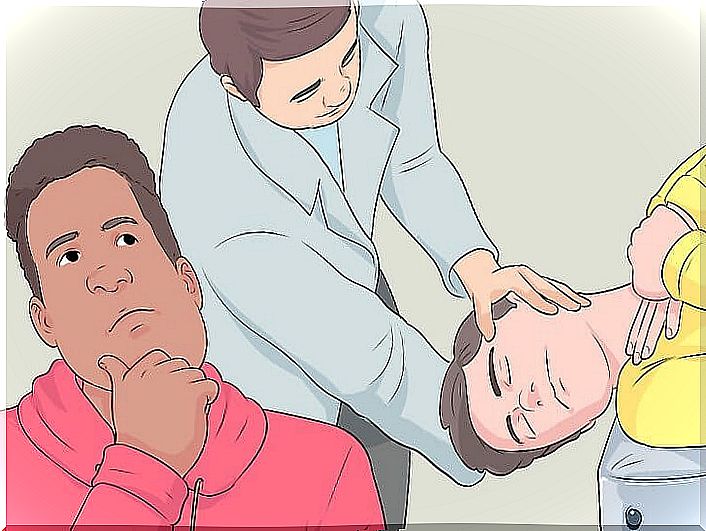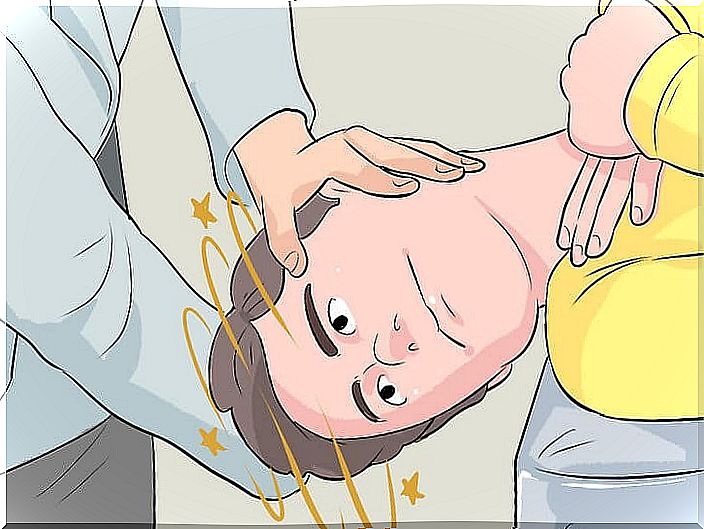The Epley Maneuver
Knowing this type of first aid maneuver will help you make life easier for family, friends or acquaintances who suffer from this disorder.

Do you suffer from benign paroxysmal positional vertigo? This disorder is associated with different annoying and even dangerous symptoms. Nonetheless, the Epley maneuver can be vital in tackling it.
Find out in this article what this practice consists of and how it is done step by step. Keep reading!
The Epley maneuver
Benign paroxysmal positional vertigo (UPPB) is a disorder that affects the inner ear and causes a sensation of vertigo in certain positions. This, accompanied by nausea and dizziness, is something that can be resolved thanks to the Epley maneuver.
Learning how to do it will allow you to help anyone who suffers from this disorder when it appears at the most unexpected moment. Next, we present different ways to carry it out.
How to practice the Epley maneuver
The way to practice the Epley maneuver is not complicated. In addition, knowing it is not only useful for those people who have a relative with positional vertigo.
According to several researchers from the Hospital Español de México: if the person suffering from the disorder also knows how to act, they will be able to reduce symptoms earlier and feel better faster. So, these are the steps to follow.
1. Go to bed as soon as possible
When someone begins to feel vertigo symptoms, they should lie down or sit down. But, in any case, the ideal is that the person does not remain standing; as there is a risk of it falling or getting hurt.
Although this disorder causes nausea or dizziness, it is important that the patient lies on his back as straight as possible. To do this, make use of a pillow, a cushion or any other object that serves to support the upper part of his back.

Of course, at no time should the pillow or cushion support the weight of the head. Not even the neck has to rest on it.
It is important to keep this in mind since, in this way, the person would be on his back with his head loose and without any support; achieving the ideal position to perform the Epley maneuver.
2. Recognize which ear is affected
Taking into account the impaired ear will allow you to do the Epley maneuver correctly. If the person suffering from the problem does not know it and neither do you, a provocation maneuver will begin.
This means that you have to cause the person to feel even more vertigo. This way, you will know which ear is affected. Once discovered, you can begin to take steps that will help ease the symptoms.
In the next point, we will show you how to identify it to solve this through a quick, safe and effective maneuver.
3. Rotate your head
As explained by medical specialists at Johns Hopkins University, the Epley maneuver begins with the person sitting down. In this position, you’ll turn her head to the side about 45 degrees, and then lay her down with her head loose.
- If you do not have a cushion or a pillow, it is also possible to do this maneuver on a bench, a table or a stretcher.

Also try doing the same, but turning your head to the other side until you identify which ear is affected. Once you have done this, the person’s head will be rotated to the opposite side and it will stay that way for at least 60 seconds.
After this time, the body of the person will turn towards that same place while his head looks down. Again, it will hold for 30 to 60 seconds in this position.
Then you will sit as upright as possible while breathing calmly. Keep in mind that it is not advisable to stand up too quickly, but little by little.
The importance of going to the doctor
It is important that a doctor perform the Epley maneuver first, especially if a person has positional vertigo. In this sense, trying to do it yourself can be fatal; since the same sensation of vertigo is capable of causing that the exercise is not finished well.
In addition, a doctor will provide a series of tips that the patient can put into practice as soon as they notice the first symptoms. Knowing this will also help you tell those around you what to do if the disorder occurs.
Of course, the most important thing is to perform this maneuver gently. Abruptness can make vertigo symptoms worse. Therefore, staying calm will be necessary as well as beneficial. And you? Did you know this maneuver?








